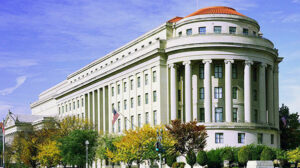Overdraft costs on consumer checking accounts vary widely across financial institutions and often result in more costs and more involuntary account closures for consumers who opt into such coverage, the Consumer Financial Protection Bureau reported on Tuesday.
“Consumers need to be able to anticipate and avoid unnecessary fees on their checking accounts,” said CFPB Director Richard Cordray, “but we are concerned that overdraft programs at some banks may be increasing consumer costs. What is often marketed as overdraft protection may actually be putting consumers at greater risk of harm.”
The CFPB began looking at banking practices in 2012 when it initiated a broad inquiry into financial institutions’ overdraft programs for consumer checking accounts. Many of the findings in this latest report have been themes the group has touched on in the past — namely, that banking products tend to be opaque to consumers in terms of prices.
The CFPB’s new 70-plus-page report is now available as a free download.
The CFPB not respond to our request for further details.
Varying Fees
Banks often use different methodologies for measuring how often accounts incur overdraft and nonsufficient funds fees, the report found. Not only that, but average overdraft and NSF-related fees varied by as much as US$201 among study banks.
Another eyebrow-raising finding: Consumers who have opted in for overdraft coverage are more likely to pay more fees — in the hundreds of dollars — and still have their accounts closed than are people who have declined it.
One explanation is that people who decide to get overdraft protection are those who tend to be careless about staying on the right side of their balance sheet in the first place — in other words, they are paying more fees because they are tapping into the overdraft more and, in some cases, are finding their accounts closed because they have gone too far into the black.
Unfortunately for banks, though, such rationale holds little weight with customers who still view banks with low regard.
“Reports and statistics and sound bites like these just reinforce the anger people have toward the banking sector,” David Johnson, principal with Strategic Vision, told CRM Buyer. “Their image is still a highly negative one with the public.”
Questionable Behaviors
The question of fees, though, cannot be entirely explained away by consumers who can’t balance a checkbook.
In fact, there are concerns about “the degree to which financial institution practices influence overdraft fee incidence,” the CFPB pointed out in its report.
Multiple class-action lawsuits have also challenged such industry practices as check ordering — when the bank cashes the largest-value check first so that it can levy overdraft fees on multiple smaller-value checks afterwards.
One conclusion to draw from all of this is that overdraft protection — a product that banks market as being good for the consumer — can cause them more harm than they might realize.
This is not a new finding, Johnson noted, but it does add to the steady stream of reports describing how some bank practices are harmful to consumers: “It is a reminder for people about all that they hate about banks.”























































Social CRM
See all Social CRM